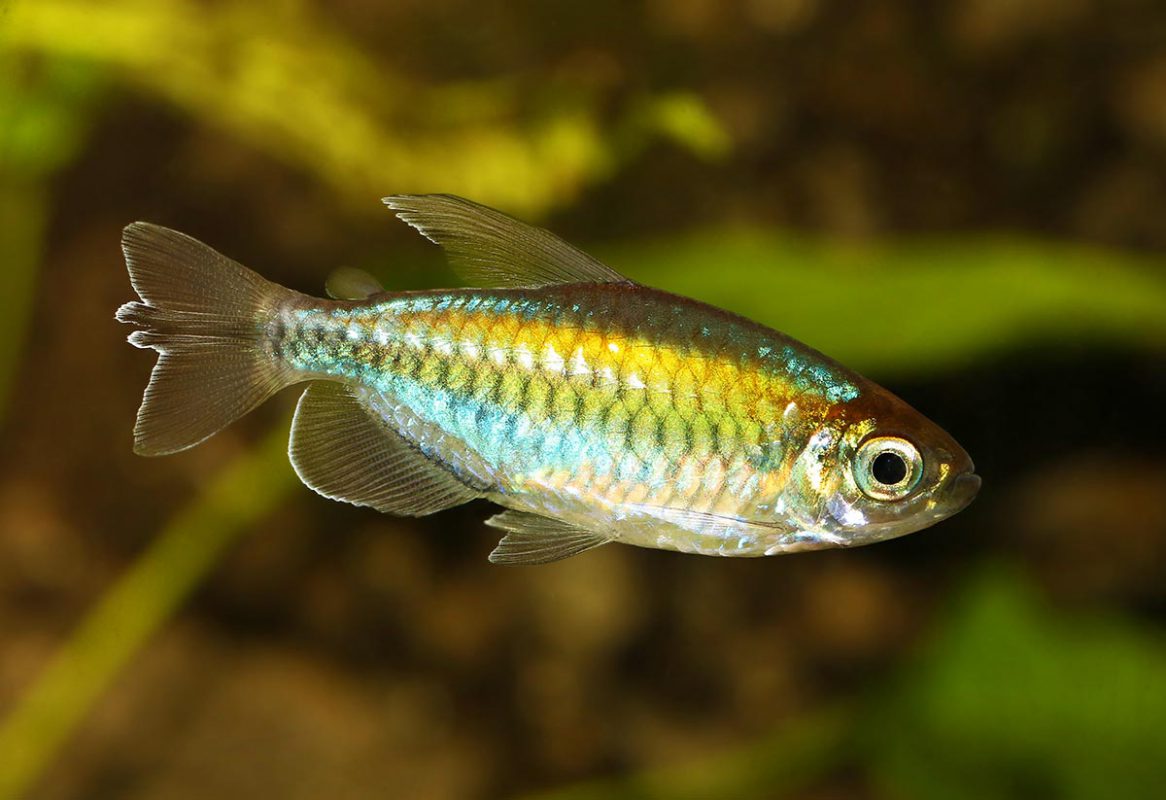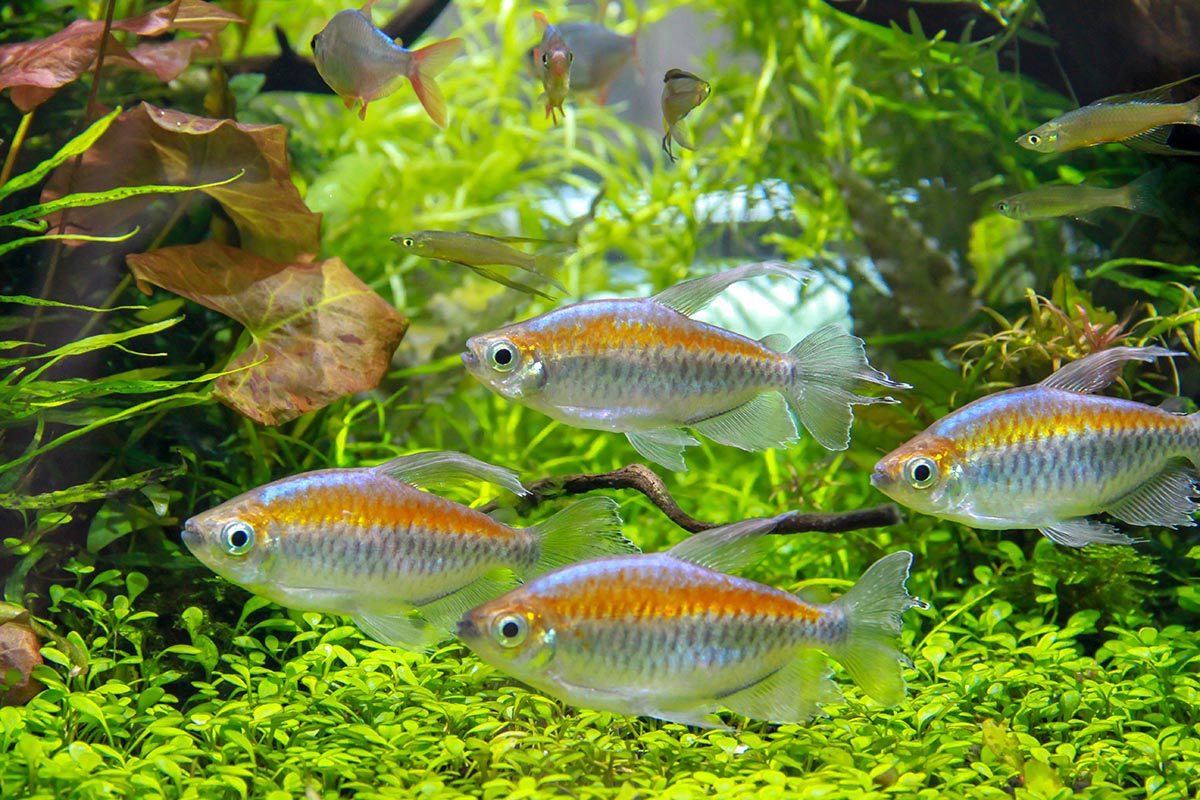Origin and appearance
Highly adaptable with a vibrant colouring, Congo tetras are a very popular choice for aquariums. They have iridescent red and blue stripes running the length of their bodies.
The Congo tetra is named for its origins. Phenacogrammus interruptus comes mainly from the central Congo Basin, where it typically lives in rainforest rivers, and belongs to the African tetra family. Kept correctly, Phenacogrammus interruptus can grow to 6 – 9 cm and live to be 10 years old. The males have a more intense colouring than the females, which are a little smaller overall. Male Congo tetras typically have extended middle rays on their tail fins.
Aquarium and water
To create an appropriate habitat, the aquarium should have a volume of at least 200 litres. Congo tetras prefer tropical temperatures of 23°C to 27°C. The water should be slightly acidic to slightly alkaline (pH value: approx. 6.0 – 7.8). A general hardness of 5 – 19° dGH is also recommended for this species of tetra, but they can also be kept in a tank with slightly softer or harder water.

Keeping conditions
Phenacogrammus interruptus are shoaling fish and very active swimmers. They should therefore be kept in a group of at least 6 creatures. Congo tetras are very peaceful fish, making them well-suited to community tanks. However, they should not be mixed with “fin pickers”. They mainly swim in the middle region of the tank.
Planting and decoration
The aquarium should have vegetation around the edges in particular and plenty of space for the fish to swim. The plants should be placed at the back of the aquarium. There should also be places for the fish to hide. Try to replicate the natural habitat of the rainforest rivers in the Congo Basin with a dark substrate and floating plants.
Diet
Congo tetras eat insects. They prefer bloodworms and frozen food but can also be fed plant-based dry food on occasion, which means you can feed them various foods such as TetraMin or Tetra Delica.

